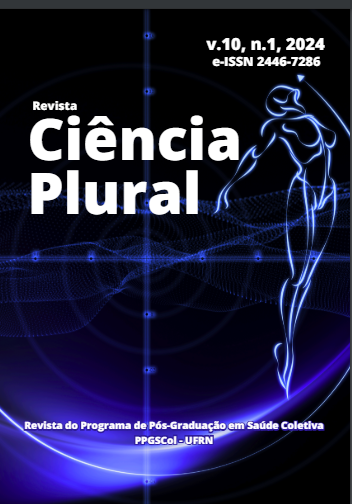DO ORAL ANTISEPTICS USED IN THE DENTAL ROUTINE HAVE ANTI-VIRAL EFFICACY? A SYSTEMATIC REVIEW OF IN VITRO STUDIES
DOI:
https://doi.org/10.21680/2446-7286.2024v10n1ID34126Resumo
Introduction: Mouthwashes play an important role in the dental clinic, but their role on viruses requires investigation. Objective: to review in vitro studies to identify the effect of different mouthwashes on the main viruses associated with routine dental care. Methodology: The following databases were searched in September 2023: PubMed, Embase, Scopus and Web of Science databases; the Cochrane Library and the Virtual Health Library (VHL); and grey literature. In vitro studies that used mouthwashes to reduce the viral load were selected. The PICOS strategy was considered to define eligibility criteria: the Population (viruses involved in the etiology of oral infection), the Intervention (oral antiseptics), the appropriate comparator (positive and negative controls), the Outcomes of interest (reduction of viral load) and the Study design (in vitro studies). Results: Considering the eligibility criteria, 19 articles were included in this review. The efficacy of povidone-iodine (PVP-I), chlorhexidine, Listerine®, essential oils, and cetylpyridinium chloride (CPC) rinses were investigated. PVP-I (0.23%) had its effects mainly associated with coronaviruses SARS (Severe Acute Respiratory Syndrome), demonstrating a significant reduction in viral load after 15 seconds of exposure. Chlorhexidine (0.05%; 0.1% and 0.5%) was ineffective against adenovirus, poliovirus, and rhinovirus respiratory viruses. Listerine® demonstrated superior efficacy against HSV-1 and 2 viruses and influenza A, and cetylpyridine chloride also demonstrated virucidal activity against influenza A. Conclusions: The type, concentration, and time of exposure to antiseptics varied between studies. PVP-I and chlorhexidine digluconate were the most studied substances, but in general, PVP-I was more effective in reducing viral titers, especially concerning coronaviruses. Other antiseptics such as CPC, H2O2 and Listerine® have also shown significant reduction in viral load, but this is a limited number of studies.
Keywords: Mouthwashes; Virus; Infection Control; Antiviral Agents.
Downloads
Downloads
Publicado
Como Citar
Edição
Seção
Licença
Copyright (c) 2024 Revista Ciência Plural

Este trabalho está licenciado sob uma licença Creative Commons Attribution-NonCommercial-ShareAlike 4.0 International License.
À Revista Ciência Plural ficam reservados os direitos autorais referente a todos os artigos publicados.






